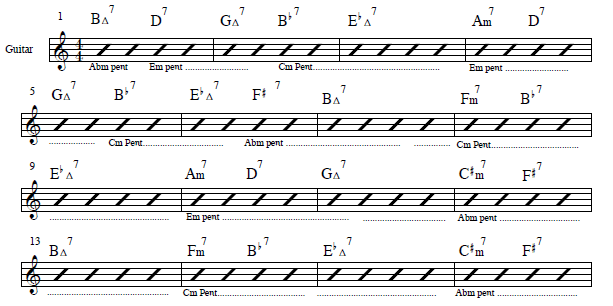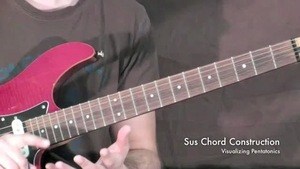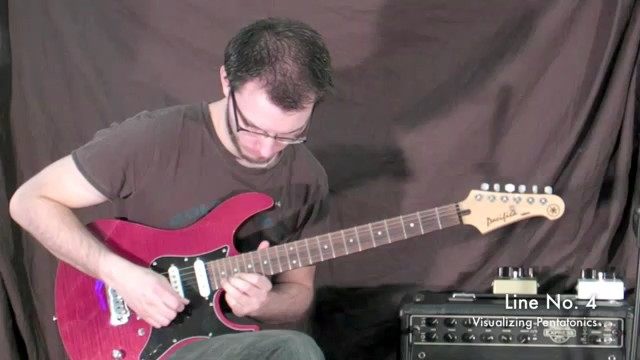Here's our final comping example using pentatonic scales as our harmonic source.
The chord sequence below is from a well known tune by John Coltrane. I'll name this one Giant Leaps! That should give you a clue!
Normally when comping on this tune you would play literally the chord written in the chord chart or at least a derivative or substitution of that chord. We're going to make things more ambiguous and modern sounding.
Let's assume that we have a good bass player and he's outlining the harmony in his bass lines. We can look at what key we're in at any particular moment in the tune and use our sus4 chords and inversions for the relevant pentatonic scale to comp chords and harmonic ideas with.
This particular tune is in three keys:
Bmaj - use an Abm pentatonic - so Absus4 and Gbsus4
Gmaj - use an Em pentatonic - so Esus4 and Dsus4
Ebmaj - use a Cm pentatonic - so Csus4 and Bbsus4
By doing this, the sound of the progression is opened up but the harmonic intent stays the same. In other words, you wouldn't affect what the soloist has to play, you'd just affect the sound and feel of their solo as they play through the changes normally.
Of course, the great thing here is that this will also work for solos. Many modern jazz musicians use this idea in great abundance in their improvisations.
This is a very hard thing to do at first and I'd recommend that you spend a great deal of time getting very familiar with where these sus4 chords and inversions are on the guitar before even attempting to play through this sequence.
Best of luck and let me know if you have any questions!!















































